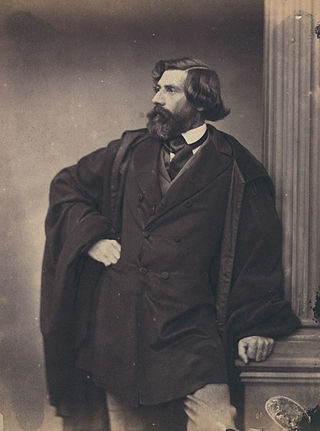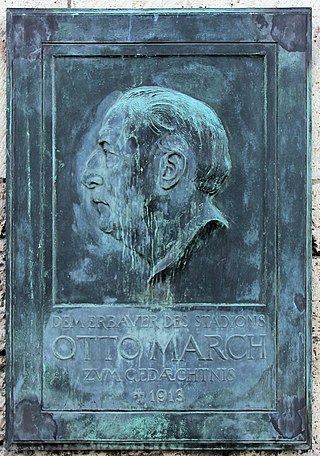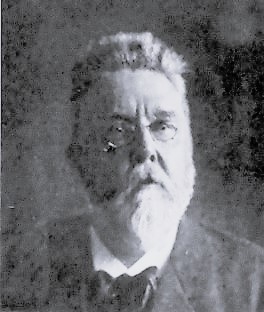Life and work
After an apprenticeship as a potter, with Tobias Feilner, he was briefly a partner in Feilner's company. Later, he founded his own company, the "Marchsche Tonwarenfabrik", in Charlottenburg. The land where the factory and workers' residences were located is now part of the north campus at Technische Universität Berlin.
Initially, the factory made simple industrial ceramic items, including molds for the sugar industry. In the early 1840s, it began to specialize in terracotta and majolica production. He eventually became the leading terracotta producer, exceeding the output from the factory owned by Feilner, who had died in 1839. The architect, Friedrich August Stüler, used March's terracotta bricks and forms for the nearby St.-Matthäus-Kirche [ de ], and developed new uses for them at the Neues Museum.
In 1846, he oversaw the process of creating terracotta columns for the atrium in the garden at the Orangerieschloss in Potsdam, designed by Ludwig Persius. Due to the heat and a draft, he caught what was assumed to be a cold, but it degenerated into kidney and lung ailments. He was ill for more than a year, then died in the winter of 1847.
After his death, his widow Sophie maintained the business. From 1865, their sons Paul and Emil ran the company under the name "Ernst March & Söhne Tonwarenfabrik". Their high-quality terracotta was used in many well known buildings, including the Berliner Kunstgewerbemuseum, the Berlin Görlitzer Bahnhof and the Rotes Rathaus. Their youngest son, Otto, became an architect as did Otto's sons, Walter and Werner.
By 1896, the company employed 150 workers and used 1,500 tons of clay annually. In 1902, the factory merged with similar companies to form the "Deutsche Ton- und Steinzeugwerke AG" (clay and stoneware factories). The facilities in Charlottenburg were abandoned.

Andreas Schlüter was a German baroque sculptor and architect, active in the Holy Roman Empire of the German Nation, the Polish–Lithuanian Commonwealth, and the Russian Tsardom.

Matilda of Ringelheim, also known as Saint Matilda, was a Saxon noblewoman. Due to her marriage to Henry I in 909, she became the first Ottonian queen. Her eldest son, Otto I, restored the Holy Roman Empire in 962. Matilda founded several spiritual institutions and women's convents. She was considered to be extremely pious, righteous and charitable. Matilda's two hagiographical biographies and The Deeds of the Saxons serve as authoritative sources about her life and work.

William I, or Wilhelm I, was King of Prussia from 1861 and German Emperor from 1871 until his death in 1888. A member of the House of Hohenzollern, he was the first head of state of a united Germany. He was de facto head of state of Prussia from 1858, when he became regent for his brother Frederick William IV. During the reign of his grandson Wilhelm II, he was known as Wilhelm the Great.

Charlottenburg is a locality of Berlin within the borough of Charlottenburg-Wilmersdorf. Established as a town in 1705 and named after Sophia Charlotte of Hanover, Queen consort of Prussia, it is best known for Charlottenburg Palace, the largest surviving royal palace in Berlin, and the adjacent museums.

Allgemeine Elektricitäts-Gesellschaft AG was a German producer of electrical equipment. It was founded in 1883 by Emil Rathenau as the Deutsche Edison-Gesellschaft für angewandte Elektricität in Berlin.

Werner Julius March was a German architect, son of Otto March (1845–1913), and brother of Walter March, both also well-known German architects. Werner March designed Germany's 1936 Olympic stadium. Werner March was born in Charlottenburg and died in Berlin.
The Arbeitsrat für Kunst was a union of architects, painters, sculptors and art writers, who were based in Berlin from 1918 to 1921. It developed as a response to the Workers and Soldiers councils and was dedicated to bringing current developments and tendencies in architecture and art to a broader population.
Ernst Friedrich Apelt was a German philosopher and entrepreneur.

The Scharf-Gerstenberg Collection is an art museum in Berlin. Its collection of paintings, graphics and sculptures, spanning the period from French Romanticism to Surrealism, is currently housed in former rooms of the Egyptian Museum in Charlottenburg on a ten-year loan. It was founded in 2008, and is part of the National Gallery of Berlin.

Ernst Eberhard von Ihne was a German architect. He served as official architect to the German Emperor Frederick III and to his son and successor Wilhelm II. Among his best known works are the Prussian Royal Library building, the Neuer Marstall, and the Kaiser-Friedrich-Museum. He was born in Elberfeld and died in Berlin.

Bruno Möhring was a German architect, urban planner, designer and a professor in Berlin. He was one of the most important architects of the Jugendstil style in Germany. He received his education at the Technische Hochschule in Charlottenburg.

Carl Moritz was a German architect and real-estate entrepreneur. Based in Cologne, he built the Cologne Opera House of 1902, and various banks, theatres and churches in Germany. Some of his buildings were destroyed during the last two years of his life in World War II.

Ludwig Lange was a German architect and landscape designer.

Otto March was a German architect and father of architects Werner March (1894–1976) and Walter March (1898–1969).
Otto Metzger was a German-British engineer, and inventor of an impact-extrusion process for forming seamless zinc and brass cans.
Walther Carl Meiszner, was a German classical pianist and academic teacher.

Tobias Christoph Feilner was a German master potter. He also manufactured bricks, terracotta, molded stones and masonry heaters.

Johannes Michael Speckter was a German lithographer and graphics collector.

Julius Carl Raschdorff was a German architect and academic teacher. He is considered one of the notable architects of the second half of the 19th century in Germany and created his most important work with the Berlin Cathedral.

Christoph Carl Adolf Hehl was a German architect and academic teacher who focused on church buildings. He was professor of medieval architecture at the Technische Hochschule in Berlin.
This page is based on this
Wikipedia article Text is available under the
CC BY-SA 4.0 license; additional terms may apply.
Images, videos and audio are available under their respective licenses.

















